Stay in the loop
Keep up with fitness & wellbeing on our blog.
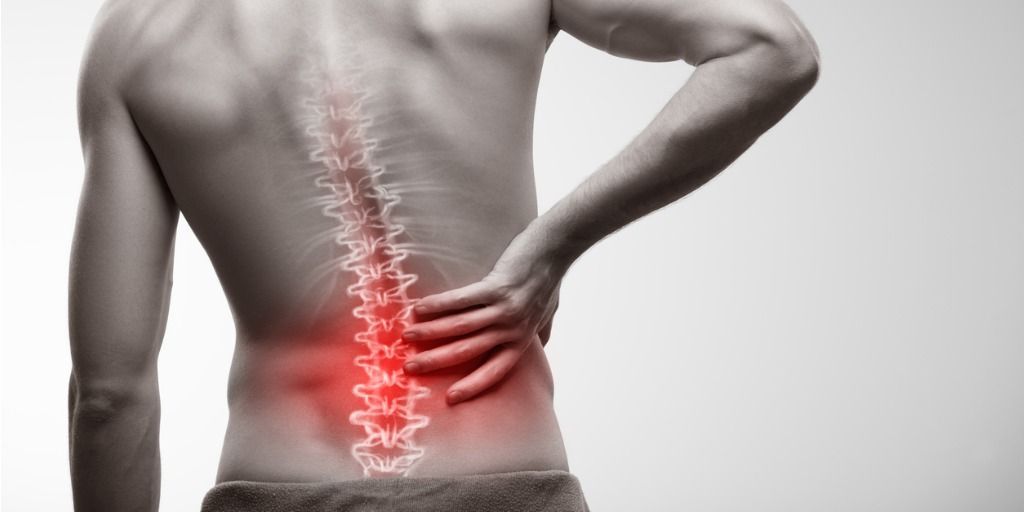
As the global population ages and the prevalence of musculoskeletal conditions continues to rise, the demand for orthopaedic surgeries has surged dramatically. With this increase comes a growing emphasis on not just the surgical intervention itself, but also on the preoperative phase as a critical window of opportunity to enhance patient outcomes. One of the most promising strategies emerging in this space is prehabilitation—a proactive, personalized approach to preparing patients physically and mentally for surgery. Prehabilitation can be broadly defined as a personalized exercise program designed to improve physical function and optimize recovery outcomes for any upcoming surgical intervention. In the context of workers compensation, prehabilitation offers additional value. By maintaining or even improving a patient’s physical function prior to surgery, individuals are often able to remain engaged in modified or light-duty work roles. This not only supports their psychological well-being and financial stability but also contributes to faster and more sustainable return-to-work outcomes post-surgery. A recent meta-analysis by Punnoose et al. 2023, found that a targeted prehabilitation program increased muscle strength, improved joint function and led to a higher health-related quality of life (HRQOL) scores. These findings were consistent with patients undergoing Total Knee Replacements (TKR), Total Hip Replacements (THR) and lumbar spine surgery. Some clinical applications are listed below: Targeted approach of 4-6 weeks, with 2 sessions per week. This aligns with physiological evidence suggesting that a minimum of 4–6 weeks of strength training is needed for neuromuscular adaptations. Mixture of supervised and unsupervised intervention Multimodal programs (e.g. combining exercise with education or psychological support) may enhance outcomes By improving outcomes and reducing recovery timeframes, prehabilitation stands out as a cost-effective, proactive approach to treatment. James Chandler Workers Compensation Specialist ‑ Team Leader South (AEP, ESSAM) Exercise Rehabilitation Services – WA
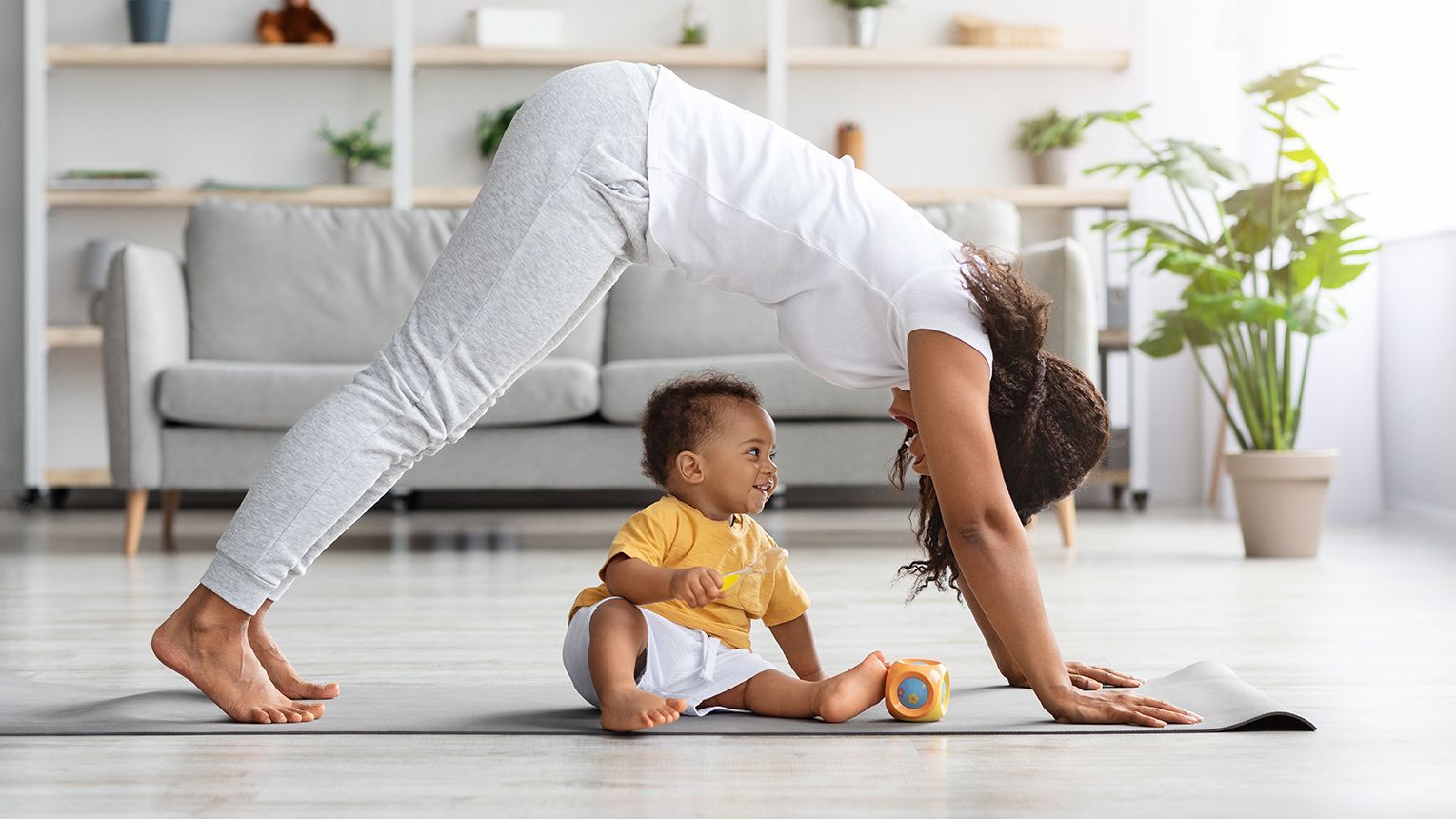
As Exercise Physiologists, a large part of our role is to empower an injured worker to integrate exercise into their lifestyle – something that is easier said than done for everyone! A common misconception about exercise, is that, for an effective workout, it must be a gruelling 1-hour session in a gym or a 10km stomach churning run, however this is not the case! Here are some alternatives and strategies to gradually make positive changes to your life: One easy way is to add movement to tasks you already do. Walking or biking instead of driving short distances, taking the stairs instead of the elevator, holding your newborn as you perform a few quick (and safe!) squats or completing short exercises during TV commercials are simple ways to stay active without setting aside extra time. Another is to schedule ‘mini’ workouts like any other appointment. Set aside just 20 to 30 minutes a few times a week—whether in the morning, during lunch, or in the evening. Utilising exercise equipment that we give you during our initial assessment and picking a handful of exercises that you may particularly enjoy, is a great shorter alternative. Treating these moments as important and ‘you’ time can help build a consistent habit. Exercising with others can make it more fun. Invite a friend for a walk, join a fitness class, or play a sport with family. When you combine social time with physical activity, it feels less like a task and more like enjoyment. The same goes for a sport or hobby that you may like, whether it’s swimming, yoga, hiking or dancing! Experimenting with the introduction of one of these strategies can be an easier first step to making a positive lifestyle change. With a little planning and creativity, exercise can become a natural part of your lifestyle, helping you stay healthy and energized without adding stress to your day. Alexander Gerry Workers Compensation Specialist (AEP, ESSAM) Exercise Rehabilitation Services – WA
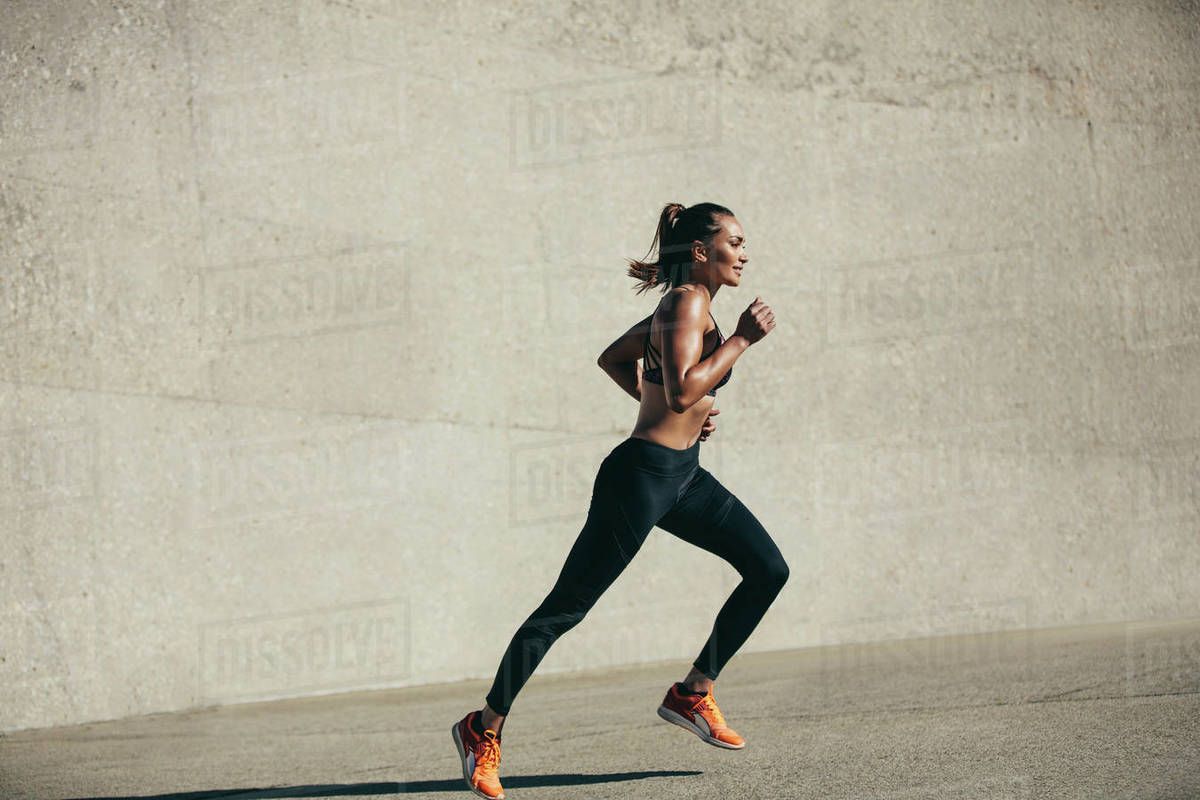
If you have doom scrolled through Instagram/Facebook or YouTube recently you may have been bombarded with advertisements for a slew of different exercise programs. These all usually have something to do with what you value and target you with a preamble on how to get it, how did I shrink my waist size, how do I build muscle or how I rehabbed my knee pain. As an exercise physiologist it's my job to write these programs! Now although I don’t always enjoy interruptions to my news feed of cat videos and rugby highlights, I do actually think a lot of these programmes have merit! I love anything with a bit of structure that can help you progress yourself towards what you care about so today I wanted to write about one of my favourite programs of all time and that is the “Couch to 5km Running Programme” Why Running? I love running as an exercise choice, it gets you outdoors, it has increasing social connections via run clubs/park runs and is completely free! However, it’s hard to jump in to, I see a lot of people getting tripped up by some of the barriers that come with it. A lot of the people I see starting running don’t know about the many choices that come with exercise and in the exercise physiology business we call this the FITT principle! - Frequency – How often are you doing your running? - Intensity – How fast or slow are you running? - Time – How long should I run for? - Type – Why run over biking or rowing? A dedicated programme takes care of these for you, and I think the Couch to 5k programme does a fantastic job of introducing you to all these different ideas. Language! The first thing I love about the “Couch to 5k” is its language. The use of simple and direct language leaves a bit of room for interpretation. You can see clear above on your first Tuesday run you will run for 1 minute and walk for 1 minute. In this small interval that speed is utterly and entirely up to you. Go as slow as you like or as fast as you like however I want you to run for the entire minute! Keeping things simple is so important and this guidance is exactly where I would want you to start off as a beginner runner, have some fun and run! Progression! From week to week the running times can be seen to get bigger and bigger! Slowly but surely these intervals only increase by 1 or 2 minutes at a time. Between each session you will be able to notice small increases, but your fitness catches up with that! The whole point of a programme is that it starts small and works up, no single day itself should feel like an insurmountable workout but by the end you’re able to run a whole 5k! Rest! This program builds in rest days and rest periods so well. Each day is spaced out giving some time for you two recovers but not so much so you can get some fitness in! Within the workouts as well these intervals leave you working for the right amount of time each workout. Goals Too often when working out our goals are too big and lofty. Being able to make big changes start with small actions and goals. You can’t change yourself image in one day so I like the time frame of 6 weeks (in some programmes 6-12 weeks) because by the end we have a set definable goal of what we want to achieve, and we can really feel thar progression of fitness! Mathew Walker Exercise Physiologist Exercise Rehabilitation Services ‑ WA
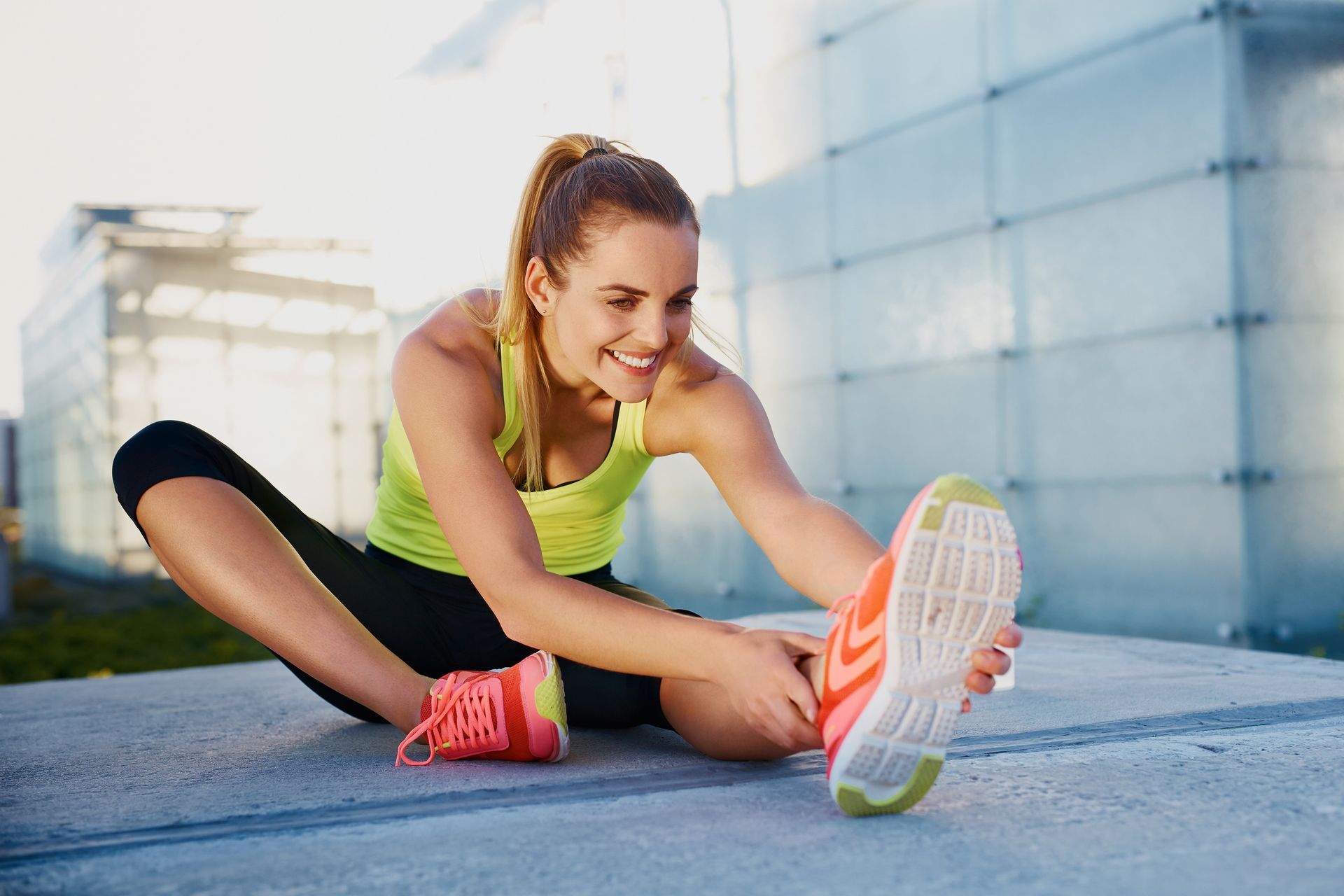
When it comes to exercise, most people focus on warming up or pushing through the workout itself, but what often gets overlooked is the warm-down which is a period of gentle movement and stretching after your main workout. Though it may feel tempting to skip it, a proper warm-down is crucial for both your physical health and your mental well-being. Here is why this final phase of your workout deserves just as much attention as everything that comes before it: 1. Helps Prevent Injury One of the most important physical benefits of a warm-down is injury prevention (Witvrouw, et al., 2004). After intense activity, your muscles are warm, flexible, and more prone to strain if you suddenly stop moving (Witvrouw, et al., 2004). Gradually slowing down your heart rate and stretching your muscles helps release tension and reduce muscle stiffness, which can significantly lower the risk of cramps, strains, and post-workout soreness (Witvrouw, et al., 2004). 2. Promotes Better Circulation During exercise, your heart rate and blood pressure increases to support your body’s physical demands (Alter, 1998). If you stop abruptly, blood can pool in your limbs, leading to dizziness or even fainting. A warm-down helps maintain healthy blood flow by gradually lowering your heart rate and allowing your body to transition smoothly back to a resting state (Alter, 1998). This improves circulation and helps the body clear out metabolic waste products like lactic acid (Alter, 1998). 3. Supports Mental Clarity and Stress Relief Exercise is a proven mood booster, and warming down can enhance these benefits. Taking time to breathe deeply and reflect during your warm-down allows your nervous system to shift from the high-energy "fight or flight" mode into the calmer "rest and digest" state (Van Hooren & Peake, 2018). This shift reduces stress hormones like cortisol and helps improve mental clarity, calmness, and emotional balance (Van Hooren & Peake, 2018). 4. Enhances Flexibility and Recovery Including dynamic and static stretches during your warm-down helps maintain or even improve flexibility over time (Alter, 1998; Witvrouw, et al., 2004). Muscles are more pliable after a workout, making this the perfect time to gently lengthen and release them (Alter, 1998; Witvrouw, et al., 2004). This not only reduces soreness in the days following exercise but also supports quicker recovery and better performance in future workouts (Alter, 1998; Witvrouw, et al., 2004). 5. Reinforces Healthy Mind-Body Connection Warming down creates a moment of mindfulness—a chance to tune into how your body feels after movement (Van Hooren & Peake, 2018). This reinforces a healthy relationship with exercise that is about more than burning calories or hitting performance goals (Van Hooren & Peake, 2018). It is a time to appreciate what your body can do and to give it the care it deserves (Van Hooren & Peake, 2018). This shift in perspective can be especially helpful in maintaining long-term motivation and preventing burnout (Van Hooren & Peake, 2018). Conclusion A warm-down might seem like a small part of your workout, but its benefits for your physical and mental well-being are significant. From preventing injury and aiding recovery to promoting mental clarity and deepening your connection with your body, those extra 5–10 minutes are well worth your time. So next time you finish a run, gym session, or yoga class, do not rush off, take a couple minutes to wind down. Your body and mind will thank you for it. References: Witvrouw, E., Mahieu, N., Danneels, L., & McNair, P. (2004). Stretching and injury prevention: an obscure relationship. Sports medicine, 34, 443-449. Alter, M. J. (1998). Sport stretch. Human Kinetics. Van Hooren, B., & Peake, J. M. (2018). Do we need a cool-down after exercise? A narrative review of the psychophysiological effects and the effects on performance, injuries, and the long-term adaptive response. Sports Medicine, 48(7), 1575-1595.
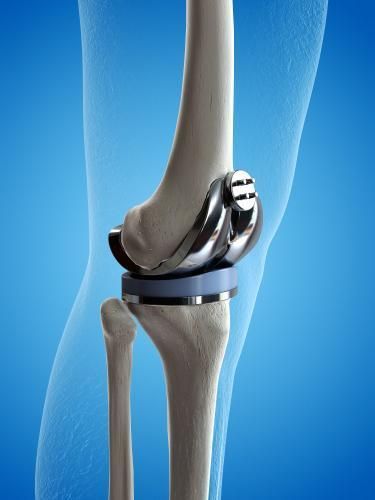
Each year, more than 53,000 knee replacements are performed in Australia, with that number steadily increasing. It's predicted that by the year 2030, this number will rise to over 150,000. Unfortunately, genetics play a significant role in whether you will develop osteoarthritis and require a knee replacement. However, there are several proactive steps you can take to reduce your risk. Weight Management Maintaining a healthy weight is important for reducing the risk of knee osteoarthritis. Excess weight puts additional stress on your knees, increasing the risk of developing osteoarthritis. Live an Active Lifestyle Engaging in a variety of exercises, including both strength training and aerobic activities, is essential for maintaining healthy knees. Strength training helps build muscle around the knee, providing better support and reducing the strain on the joint. Aerobic exercises, such as walking, swimming, and cycling, improve cardiovascular health and promote overall physical fitness. A well-rounded exercise routine can help reduce the risk of injury and osteoarthritis. Avoid Repetitive Knee Injuries Preventing knee injuries is another key factor in reducing the risk of needing a knee replacement. It’s been shown that people who have had multiple knee injuries and or surgeries are more likely to develop knee osteoarthritis later in life. Brody Kilbey Workers Compensation Specialist (AEP, ESSAM) Exercise Rehabilitation Services – WA

Central Park will be hosting the Step-up for MSWA charity event on Sunday, the 22nd of June 2025! Below are some tips on training in the lead up to the event, and what you can do to prepare day of! Training tips: Take the stairs The best way to train is to do more of what you’ll be doing—climb more stairs and increase your daily walking. Add high-intensity activities like running, cycling, or incline walking to boost endurance, especially if you're aiming for a fast finish. No fitness watch? Most smartphones can track your steps! Sleep & eat well Aim for 7–9 hours of sleep and fuel your body with a balanced diet: lean protein, whole carbs, and minimal processed foods. Good sleep and nutrition help with both performance and recovery. Build strength Stronger legs and joints help prevent injury. Include squats, lunges, and calf raises in your routine to support stair climbing. How to prepare on the day: Eat smart Have a light, balanced meal about 1–2 hours before the event. Include carbs for energy and stay hydrated. Dress appropriately Wear comfortable workout gear and proper shoes with good grip and support. Bring essentials Pack a water bottle, a sweat towel, and any medical needs (like asthma puffers). Pace yourself Keep a steady pace and listen to your body. Stay positive Remember you're climbing for a cause—supporting people living with MS! Be sure to enjoy the experience!
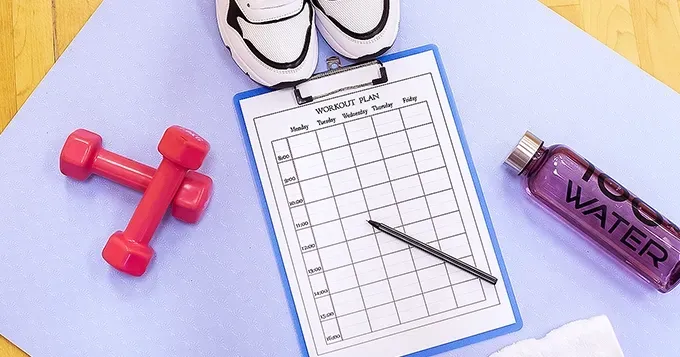
1. Time of Day Identify, if you haven’t already, if you are a morning person or a night owl. Now I don’t necessary mean whether you struggle to wake up before 8am or find it impossible to fall asleep until the clocks strikes 12. I mean, identify when the BEST time is for YOU to complete 45-60 minutes of uninterrupted regular structured exercise (RSE). This can take time, but once you do find the ideal time of day for your RSE, stick to it, make plans AROUND your RSE time and make that time for yourself. Be firm but also be fair to yourself when life inevitably creeps back in to dismantle your routines. Find ways to work around it, and make it work for you. 2. Buddy System Call on a partner, friend, family member, colleague, or your furry loved ones. This person should ideally be someone who you can hold accountable, and who you know will hold you accountable. In no way do you have to train together, bonus points if you do, but they are there to encourage, support, and empower you to get to your fitness destination. 3. Goal Setting Like a lot of aspects in our lives a way to maintain consistency throughout your fitness journey is goal setting. Goal setting is a very powerful way to turn a dream or a thought into an actionable and achievable task. The simplest way to set a goal is to follow the SMART goal process. Specificity: What is it you are looking to target? Improve strength – okay, stronger in what exactly? Lose weight – absolutely, how much weight? Measurable: Can the above specific goal be measured if so, how? Achievable: Is the goal realistic or is it far-fetched. It's okay to have big goals, but it's more important to break your big goals down into smaller, more achievable goals. Relevant: Apply the goal to your life, a goal becomes reality before you know it if the goal has relevance to you. i.e. a running race coming up, would require you to train more, or maybe your wedding is on the horizon and you want to be in the best shape of your life. Time bound: The final element of any excellent goal is setting a time-based deadline. Now this doesn’t mean it’s the end, far from it, this is where you will evaluate your goal against your performance, and in turn, set another goal. 4. Have a Spot This can mean a lot of different things for a lot of different people, and can greatly depend upon your goals (yes, a call back). For many people obtaining a gym membership is the ideal way to train and maintain consistency, for others, a home-based gym with the necessities is all they need, for some a good pair of running shoes and their favourite running loop. Having a dedicated space is very important however, can be different for everyone, find what works the BEST for you. 5. Practice Like many aspects of our life, the more we do any one thing, the better we get. The same applies to behavioural changes like consistency. The first weeks can be easy because its new and exciting, or it can be daunting because its new and terrifying. However, in a roundabout sort of way, the key to consistency specifically with exercise, is finding the BEST form of exercise for YOU. Find the one where you get the most enjoyment from and run with it (pun intended). Lachlan Simpson Workers Compensation Specialist (AEP, ESSAM) Exercise Rehabilitation Services ‑ QLD
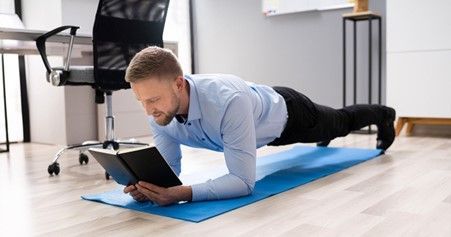
Exercise for Mental Health: A Vital Component for Busy Individuals In the hustle and bustle of modern life, juggling work, family, and social obligations can leave little room for self-care. However, prioritizing regular physical activity is crucial for maintaining not just physical health but also mental well-being. While the demands of a busy schedule might make it challenging to incorporate exercise into daily routines, the profound benefits it offers for mental health make it a non-negotiable element of a balanced and fulfilling life. The Connection Between Exercise and Mental Health Exercise has long been celebrated for its physical health benefits, including weight management, cardiovascular health, and increased strength and endurance. However, its impact on mental health is equally significant and often overlooked. Research has shown that physical activity can alleviate symptoms of anxiety and depression, improve mood, enhance cognitive function, and reduce stress levels. Some of the benefits of exercise on mental health include: Mood Enhancement: Engaging in physical activity stimulates the release of endorphins, often referred to as the "feel-good" hormones. These chemicals act as natural mood lifters, helping to combat feelings of sadness and anxiety. Stress Reduction: Exercise provides a healthy outlet for stress relief. Physical activity increases the production of norepinephrine, a chemical that moderates the brain's response to stress. Additionally, the repetitive nature of many forms of exercise can have a calming effect, akin to meditation, helping individuals feel more relaxed and centred. Improved Sleep: Regular exercise has been shown to improve sleep quality, which is closely linked to mental health. A good night's sleep is essential for cognitive function, emotional regulation, and overall well-being. Cognitive Benefits: Exercise has been found to boost brain function and protect against cognitive decline. Physical activity increases blood flow to the brain, promoting the growth of new neurons and enhancing synaptic plasticity. This can lead to improved memory, concentration, and overall cognitive performance, which are particularly beneficial for busy individuals juggling multiple responsibilities. Social Interaction: Many forms of exercise, such as team sports or group fitness classes, provide opportunities for social interaction and connection. Building relationships and engaging with others in a positive, supportive environment can have a significant impact on mental health, reducing feelings of isolation and loneliness. Exercise is an Antidote to Burnout When work and personal life pile up, burnout becomes a real concern. The feeling of being constantly “on” with no time to recharge can negatively impact both your mental and physical health. Exercise provides a much-needed escape. It helps you disconnect from work pressures and reconnect with yourself. Taking the time to move your body is a form of self-care that signals to your brain that you are prioritizing your well-being. As you engage in physical activity, your body releases tension, clears your mind, and gives you space to breathe—important factors in preventing burnout. Overcoming Barriers to Exercise for Busy Individuals For those with hectic schedules, finding time for exercise can be challenging. However, integrating physical activity into daily routines is possible with some strategic planning and creativity. Here are some tips to help busy individuals make exercise a priority: Schedule It In: Treat exercise as a non-negotiable appointment, just like any other important meeting or commitment. Block off time in your calendar for physical activity and stick to it. Consistency is key to reaping the mental health benefits of exercise. Incorporate Short Bursts: If long workout sessions are not feasible, aim for shorter bursts of activity throughout the day. Even ten minutes of exercise, such as a quick walk, stretching, or a mini workout, can contribute to overall mental well-being. Combine Activities: Look for opportunities to combine exercise with other tasks. For example, take a walking meeting, use a standing desk, or do bodyweight exercises while watching TV. These small changes can add up and help you stay active. Find Activities You Enjoy: Choose forms of exercise that you genuinely enjoy, as this will make it easier to stick with them. Whether it's dancing, hiking, swimming, or playing a sport, finding an activity that brings joy will increase the likelihood of making it a regular part of your routine. Set Realistic Goals: Set achievable fitness goals that align with your schedule and lifestyle. Start with manageable targets and gradually increase the intensity and duration of your workouts as you build confidence and stamina. Make It a Social Event: Involve friends, family, or colleagues in your fitness journey. Exercising with others can provide motivation, accountability, and an opportunity to bond over a shared activity. Conclusion Incorporating exercise into the lives of busy individuals is essential for maintaining mental health and overall well-being. The positive impact of physical activity on mood, stress reduction, sleep quality, cognitive function, social interaction, and burnout prevention makes it a valuable tool for anyone seeking to navigate the demands of a hectic lifestyle. By prioritizing exercise and finding creative ways to integrate it into daily routines, busy individuals can enjoy the mental health benefits that come with an active lifestyle. Remember, a healthier mind is a step towards a happier, more balanced life. Blake Cocking Workers Compensation Specialist ‑ WA Team Lead (AEP, ESSAM) Exercise Rehabilitation Services ‑ WA

The Role of Load Management in Rehabilitation: A Framework for Returning to Function, and Injury Prevention. Load management is often associated with high performance sport, but its principles are just as critical in rehabilitation. Whether guiding injured workers back to work, older adults to independent living, or patients recovering from injuries, progressively and systematically managing load is essential for recovery, injury prevention, and long-term function. A major challenge in rehabilitation is balancing workload progression to optimise adaptation without overloading healing tissues. Sudden spikes in training load or returning to full activity too soon significantly increase the risk of re-injury. Exercise physiologists can use load monitoring, periodisation, and predictive planning to ensure a structured and safe return to work, life, or recreational activity. Understanding Load and How to Monitor It In rehabilitation, load refers to the total amount of mechanical and physiological stress placed on the body. This includes external load; the measurable work performed (e.g., weight lifted, steps taken, distance covered, time spent in physical activity), and internal load; the body’s physiological and perceptual response to that work (e.g., heart rate, rate of perceived exertion (RPE), pain, fatigue). Both external and internal load must be monitored to ensure that rehabilitation is progressive yet not excessive. One of the most useful frameworks for load management is the Acute: Chronic Workload Ratio (ACWR), which helps determine whether a patient is progressing at a safe rate or at risk of overload. A sudden spike in acute load (ACWR >1.5) increases injury risk by 2-4 times in the following week. Therefore, a gradual increase in chronic load (≤10% per week) is essential to build resilience and capacity. - Acute Load = The total workload over the past week. - Chronic Load = The rolling 4-week average of workload. - ACWR = Acute Load ÷ Chronic Load. Patients often underestimate how small spikes in activity (e.g., resuming full work shifts after time off, or inconsistent engagement in their self-management plan) can lead to flare-ups or re-injury, and by tracking ACWR, we can educate the patient accordingly and prevent excessive acute spikes while ensuring a steady increase in chronic workload, reducing the likelihood of setbacks and ensuring a progressive return to function. To apply these principles effectively, we need accurate and practical ways to measure and track load in real world rehabilitation settings. Unlike athletic settings, maximal strength testing (1RM) is often inappropriate in rehabilitation. Alternative methods include volume-based and time-based load tracking, perceived exertion and fatigue monitoring, and functional testing. - Monitoring total weight lifted per session (sets × reps × resistance). - Measuring time under tension for endurance-based activities. - Using exercise RPE and session RPE to gauge effort. - Reassessing movement capacity, endurance, and strength progression over time. Using subjective feedback alongside objective load tracking allows for better exercise prescription and progression. Asking the right questions can guide real-time modifications: External Load Questions: - How much activity did you complete this week? - How does this compare to last week? - Did you struggle with any tasks or exercises? Internal Load Questions: - How fatigued do you feel after sessions? - How long does it take you to recover? - Are you experiencing pain or discomfort, and how does it change with activity? Structuring Load Progression for Long-Term Success Periodisation is the planned progression of training load over time, ensuring continued adaptation without excessive strain. While typically used in athletic settings, structured periodisation is just as valuable in rehabilitation, helping prevent stagnation by adjusting workload over time, ensuring progressive overload while respecting tissue healing and recovery rates, and guiding return-to-work planning by matching rehabilitation loads with real-world demands. A structured approach allows us to compare a patient’s current workload tolerance to their end goal and reverse-engineer a safe progression plan. If a patient needs to tolerate X hours of work or Y level of activity, we can use their current capacity and reverse-calculate a safe, gradual progression timeline and by maintaining consistent, small increases in chronic workload, we minimise setbacks and ensure safe long-term recovery. Linear Periodisation is best suited for straightforward recovery cases with minimal variability in symptoms. While, nonlinear periodisation may be more practical for rehabilitation, as symptoms and capacity can vary day-to-day. - Linear Periodisation: Steady, predictable increases in intensity, volume, or duration over time. - Nonlinear (Undulating) Periodisation: Load fluctuates based on recovery, pain, and function. Applying Periodisation to Rehabilitation Planning Step 1: Establish a Baseline Identify current weekly workload (e.g., hours of tolerated activity, steps, resistance training volume) and functional deficits (e.g., strength, endurance, movement capacity). Step 2: Define the End Goal What workload is required to return to work, sport, or daily function? This could mean sustaining an 8-hour work shift, lifting a certain weight, or tolerating daily activities without pain. Step 3: Plan a Safe Progression Gradually increase chronic workload by ≤10% per week. Avoiding acute spikes (ACWR >1.5) to prevent setbacks. Monitor pain, fatigue, and function to guide daily and weekly adjustments. By integrating load monitoring, periodisation, and predictive planning, exercise physiologists can create safe, structured rehabilitation programs that optimise recovery, prevent re-injury, and guide patients back to work, sport, or daily life with confidence. Key Takeaways for Exercise Physiologists - Load management is essential in rehabilitation, not just in sports. - Acute vs. chronic load balance is key. Avoiding acute spikes prevents injury, while gradual increases build resilience. - Tracking external and internal load ensures a data-driven approach to exercise prescription. - Periodisation structures rehabilitation progression, ensuring steady gains without excessive strain. - Patient education on workload progression improves compliance and reduces re-injury risk. References Impellizzeri, F. M., Menaspà, P., Coutts, A. J., Kalkhoven, J., & Menaspà, M. J. (2020). Training load and its role in injury prevention, part I: back to the future. Journal of athletic training, 55(9), 885-892. Gabbett, T. J., Kennelly, S., Sheehan, J., Hawkins, R., Milsom, J., King, E., ... & Ekstrand, J. (2016). If overuse injury is a ‘training load error’, should undertraining be viewed the same way?. British Journal of Sports Medicine, 50(17), 1017-1018. Windt, J., & Gabbett, T. J. (2017). How do training and competition workloads relate to injury? The workload—injury aetiology model. British journal of sports medicine, 51(5), 428-435. Jildeh, T. R. (2024). Editorial commentary: load management is essential to prevent season-ending injuries in the National Basketball Association. Arthroscopy, 40(9), 2474-2476. Bache-Mathiesen, L. K., Andersen, T. E., Dalen-Lorentsen, T., Tabben, M., Chamari, K., Clarsen, B., & Fagerland, M. W. (2023). A new statistical approach to training load and injury risk: separating the acute from the chronic load. Biology of sport, 41(1), 119-134. Williams, S., West, S., Cross, M. J., & Stokes, K. A. (2017). Better way to determine the acute: chronic workload ratio?. British journal of sports medicine, 51(3), 209-210. Carey, D. L., Ong, K., Whiteley, R., Crossley, K. M., Crow, J., & Morris, M. E. (2018). Predictive modelling of training loads and injury in Australian football. International Journal of Computer Science in Sport, 17(1), 49-66. Impellizzeri, F. M., Shrier, I., McLaren, S. J., Coutts, A. J., McCall, A., Slattery, K., ... & Kalkhoven, J. T. (2023). Understanding training load as exposure and dose. Sports Medicine, 53(9), 1667-1679. Lorenz, D. S., Reiman, M. P., & Walker, J. C. (2010). Periodization: current review and suggested implementation for athletic rehabilitation. Sports Health, 2(6), 509-518. April Hawser Exercise Physiologist Exercise Rehabilitation Services – NSW
